Neill's Geology:
Vulcanologists
This page is being worked on, and will be up by 9-30-98.
![]()
Home / Glaciologists / Marine Geologists / Paleontologists / Seismologists / Gemmologists
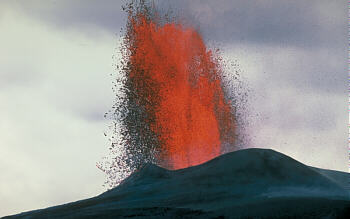
Can you imagine what it would be like to stand next to a forming volcano?
It would be hot, no, I mean REALLY hot! Incredibly hot! So hot you could toast a hot dog in 1 second!! Less!
It would also be noisy. See, a volcano is a bunch of melted rock (MAGMA!) being squeezed out from under the surface of the earth.
So, it's kind of like popping a zit! Pretty gross, huh?
All that rock is melted by the incredible heat of the earth and churned up. It gets spewed out when the heat and pressure increase, creating the volcanic eruptions we've all seen on TV.
If you think this is really cool, hey, maybe you'll become a vulcanologist!!
1. Basic Volcano Knowledge
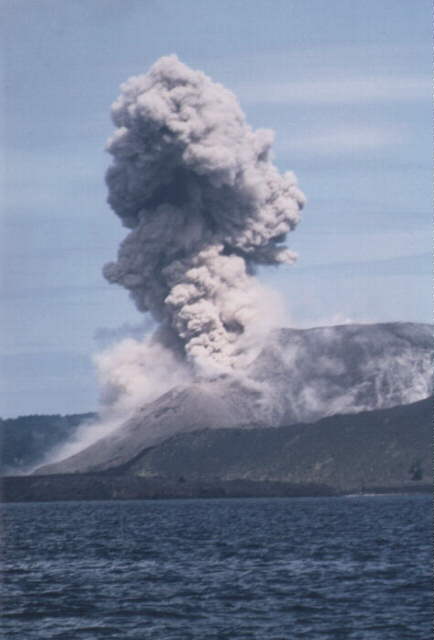 Volcanoes form when melted rock deep in the earth bubbles up and either seeps or shoots out of cracks in the Earth's surface. Makes sense, doesn't it? Well, when the melted rock is IN the earth, it's called magma, but when it comes OUT, it's called lava. I know, I know, sounds pretty stupid, doesn't it? After all, it's all melted rock, right? Right. But scientists like to have a lot of very specific names for everything so they know exactly what they're talking about.
Volcanoes form when melted rock deep in the earth bubbles up and either seeps or shoots out of cracks in the Earth's surface. Makes sense, doesn't it? Well, when the melted rock is IN the earth, it's called magma, but when it comes OUT, it's called lava. I know, I know, sounds pretty stupid, doesn't it? After all, it's all melted rock, right? Right. But scientists like to have a lot of very specific names for everything so they know exactly what they're talking about.So, when you become a scientist, and I know you will, you'll know all the correct terms for everything.
There are three different types of rocks (igneous, metamorphic, and sedimentary), and volcanoes are the source of all the igneous ones.
The most dangerous part of a volcano is the pyroclastic flow. That's when a whole section of the volcano breaks off and comes tumbling down the side of the mountain. It is made of rock chunks and ash and races towards the base of the volcano, way faster than a human can run away from it!
b
2. Forming a Volcano
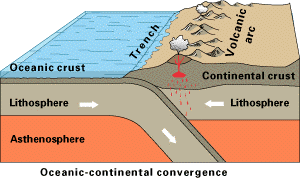 So, why the heck doesn't all that magma stay under the earth's crust where it belongs, instead of coming out and becoming lava?
b
So, why the heck doesn't all that magma stay under the earth's crust where it belongs, instead of coming out and becoming lava?
bb
b
b
b
b
b
b
b
b
b
3. The Composition of a Volcano
 b
bb
b
b
b
b
b
b
b
b
b
4. Types of Volcanoes
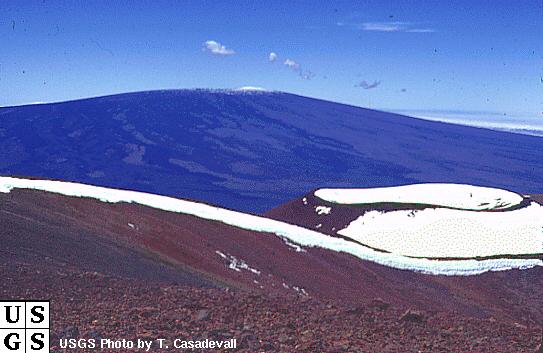
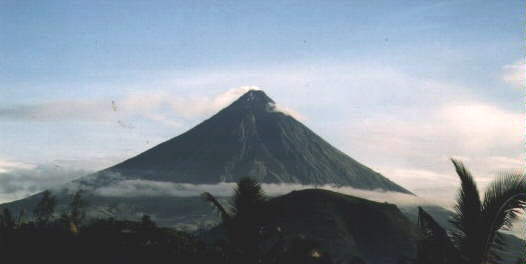
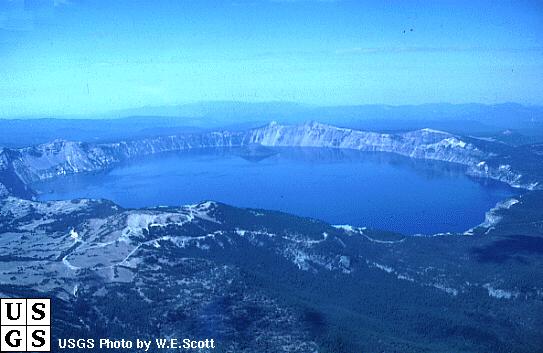
There are three basic types of volcanoes. The first kind are Shield Volcanoes. These are shaped like wide, flat shields (duh), and are created by lava flows (that's the kind of lave that just slowly oozes out over a long period of time).
The second type are called Strato Volcanoes. They're called 'strato' because they are formed with one layer on top of another layer on top of another layer and on and on!! Strato volcanoes usually explode! and don't leak out a lot of lava. So, they get tall and thin, like the picture in the middle.
The third main type are the Caldera Volcanoes. Of course, some people call them Complex Volcanoes, and some people call them Caldera Complex Volcanoes, and some people call them Inverse, and some people just call them 'Hey, you! Yeah, you with the big ol' magma chamber, I'm talking to you!'. You know. Just for short.
These volcanoes are the hardest to recognize, because sometimes they don't even look like volcanoes! Just big holes in the ground. They can be tricky, these Caldera/Caldera Complex/Inverse/Hey You volcanoes.
But don't let them fool you! They're volcanoes all right!
The problem with the Hey You volcanoes is that they sit on top of really, really big magma chambers.
And when they erupt, they ERUPT! Ash goes flyin' everywhere!!
For MILES!
You just wouldn't even believe how big these bad boys can be!!!
b
5. So, Why Are Volcanoes Important, Anyway?
WHY are volcanoes important? Why are volcanoes IMPORTANT?? Why are VOLCANOES important??? Hey! For all kinds of reasons!! I bet you thought they just kind of blew up anything around and did nothing but destroy things! Don't get me wrong, that's pretty cool, too, but volcanoes do a lot of good. After a volcano erupts, and becomes inactive (isn't likely to erupt again), the soil around the old volcano is just super for farming. I mean just SUPER!!! You can grow anything in that old volcanic ash!But maybe most importantly, volcanoes shape the world we live in. Do you think the Earth looked like this a few billion years ago? Heck, no!
Volcanoes form islands, destroy mountains, produce new soil, and generally give the Earth a facelift every few million years. Isn't that amazing?
I mean, think about it!! All this new rock from deep in the bowels of the planet, rock that NO ONE has ever seen before, coming out, being used as new soil, pushing old rocks back under the ground. And those rocks get down in the Earth, melt, and come out as new rocks!
It's the coolest thing I've ever heard of!!! Doesn't that just make you want to be a geologist?!?
It's AMAZING!!!
It's THE ROCK CYCLE, and it's featured every single day of every single year for BILLIONS and BILLIONS of years! Since forever!!
I think that is SO DARN COOL!!!!!
GEOLOGY JUST ROCKS!! Ha!
b
6. A Quick Spelling Lesson
Singular= Volcano. Plural= Volcanoes.The Study Of Volcanoes= Vulcanology. Person Who Studies Volcanoes= Vulcanologist.
So now you know. And don't you forget it.
Glossary of Volcanic Terms, courtesy of VolcanoWorld.
Is Vulcanology So Cool You Just Can't Stand It?
Well, check these places out!
VolcanoWorldThe USGS Cascades Volcano Observatory
Link 3
Link 4
Pictures Courtesy Of:
USGS Volcano HomePage | John Dehn | This Dynamic Earth | USGS Cascades Volcano Observatory
![]()
Geology Contest / Disasters! / Ask-A-Geologist / Links
About the Author / Contest Winners! / What can YOU do?
Do you have any questions, or ideas on how to make this a better site?
If so, please e-mail me here.